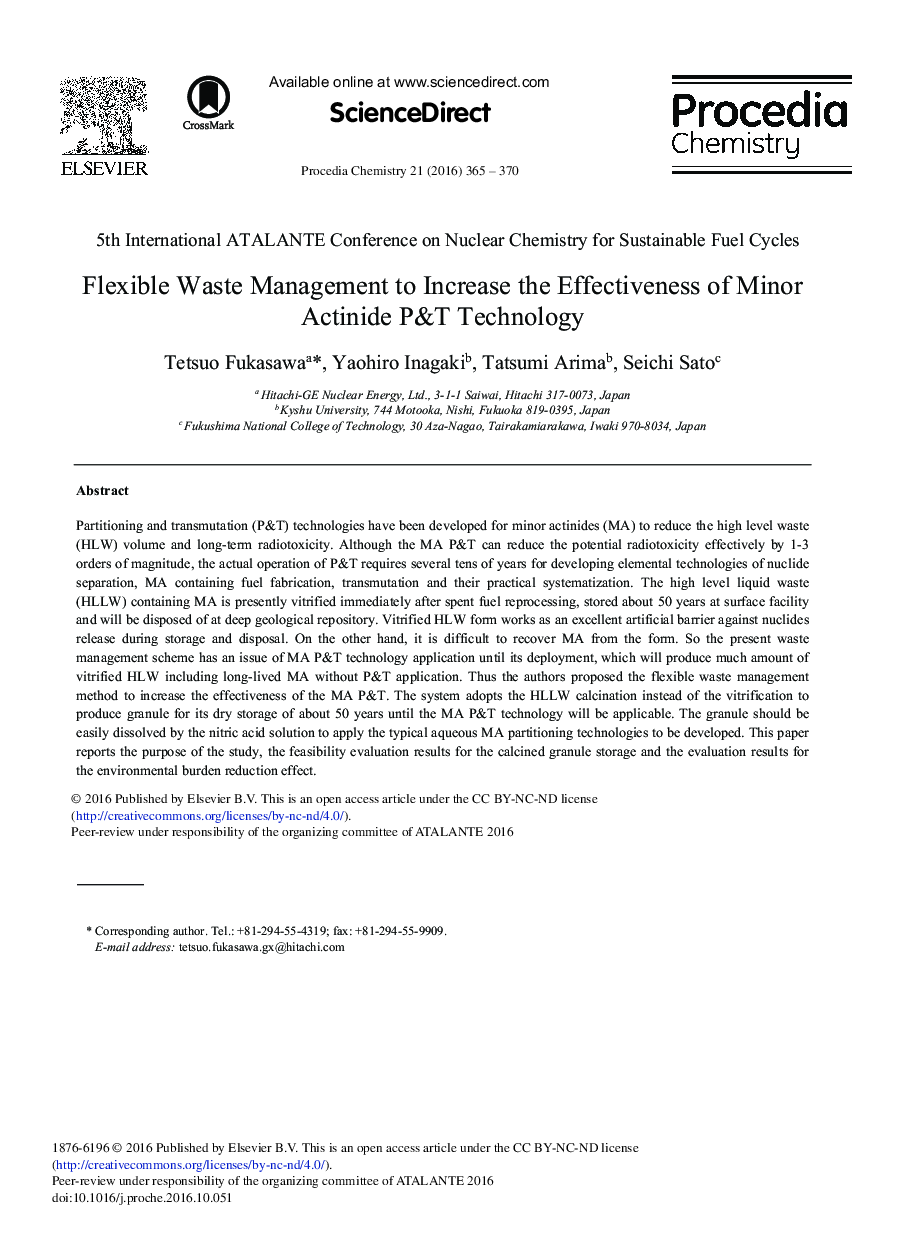| Article ID | Journal | Published Year | Pages | File Type |
|---|---|---|---|---|
| 4910952 | Procedia Chemistry | 2016 | 6 Pages |
Abstract
Partitioning and transmutation (P&T) technologies have been developed for minor actinides (MA) to reduce the high level waste (HLW) volume and long-term radiotoxicity. Although the MA P&T can reduce the potential radiotoxicity effectively by 1-3 orders of magnitude, the actual operation of P&T requires several tens of years for developing elemental technologies of nuclide separation, MA containing fuel fabrication, transmutation and their practical systematization. The high level liquid waste (HLLW) containing MA is presently vitrified immediately after spent fuel reprocessing, stored about 50 years at surface facility and will be disposed of at deep geological repository. Vitrified HLW form works as an excellent artificial barrier against nuclides release during storage and disposal. On the other hand, it is difficult to recover MA from the form. So the present waste management scheme has an issue of MA P&T technology application until its deployment, which will produce much amount of vitrified HLW including long-lived MA without P&T application. Thus the authors proposed the flexible waste management method to increase the effectiveness of the MA P&T. The system adopts the HLLW calcination instead of the vitrification to produce granule for its dry storage of about 50 years until the MA P&T technology will be applicable. The granule should be easily dissolved by the nitric acid solution to apply the typical aqueous MA partitioning technologies to be developed. This paper reports the purpose of the study, the feasibility evaluation results for the calcined granule storage and the evaluation results for the environmental burden reduction effect.
Keywords
Related Topics
Physical Sciences and Engineering
Chemical Engineering
Chemical Engineering (General)
Authors
Tetsuo Fukasawa, Yaohiro Inagaki, Tatsumi Arima, Seichi Sato,
